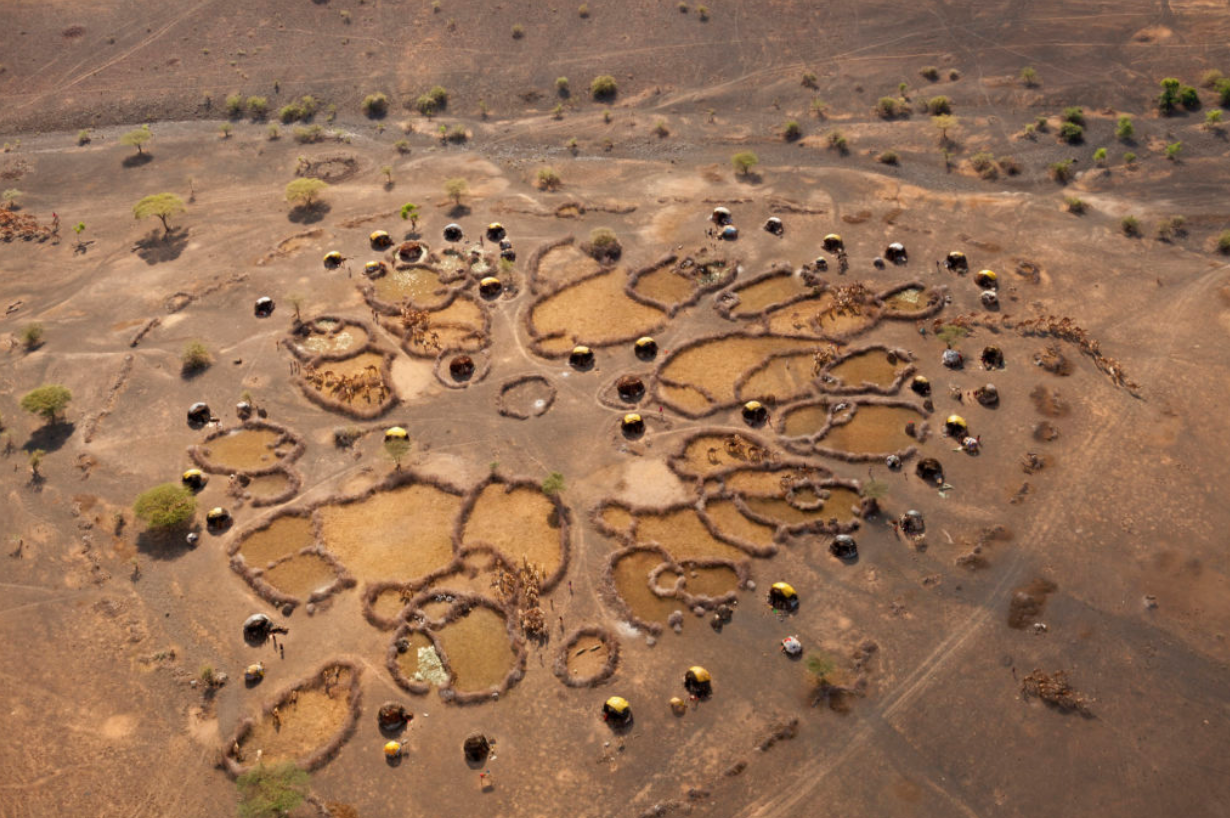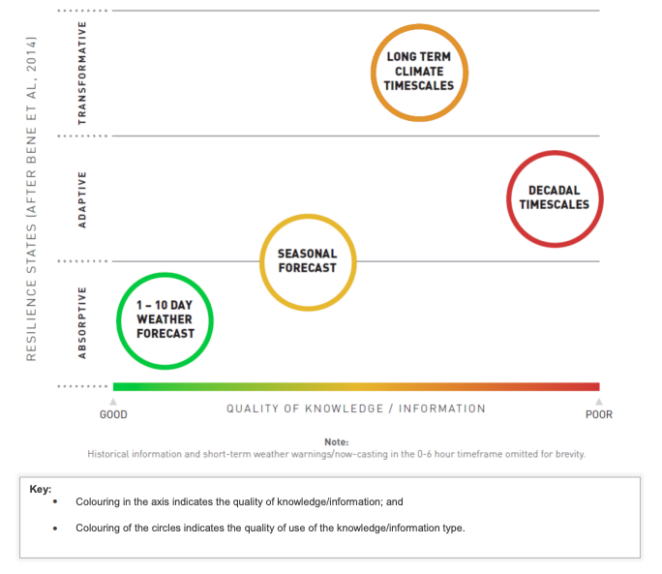Enabling Climate Science Use to Better Support Resilience and Adaptation Practice

Introduction
Climate science plays an important role in adaptation and resilience practice. This report summarizes expert analysis and key findings from climate science information provision. The authors focus on the “Valley of Death” that exists between providers and users of such information.
The Department for International Development (DFID) commissioned a review of climate science use in adaptation and resilience practice, to inform the development of their new climate and resilience research framework programme (CLARE). This programme, in partnership with the International Development Research Centre (IDRC), will provide evidence and innovation needed to climate-inform DFID and other UK Government investments threatened by climate change, particularly in Africa.
The report serves as a scoping study to provide evidence and innovation sought to “climate-inform” UK government investments. It addresses questions about processes that can enable climate science to better support resilience and adaptation practice, and those can achieve internationally agreed commitments.
*Download the full publication from the right hand column. The key messages from the publication are provided below. See the full text for much more detail.
Methods and Tools
The study addressed the following research question: Within the process of enabling climate science to better support resilience and adaptation practice and achieve internationally agreed commitments, what is working and what is missing in its use, and which people and institutions are key contributors in this field?
The authors conducted a rapid evidence assessment, supported by expert consultation and key informant interviews. The geographic focus is Africa, with a light touch approach applied to South Asia and the Pacific. The assessment examines current research activities and priorities in the science-to-application chain, with the authors concluding that “…in practice the reality of this chain is questionable.”
Key findings
Modalities of funding for climate research supporting adaptation and resilience programming have to date demonstrate limited sustained impact. Co-design of programmes linking climate science and users through well-defined knowledge exchange frameworks and processes is relatively uncommon. Much support of climate science appears to have been deployed toward an increased generation of information, paying too little attention to its use and thereby failing to address the gulf between actors involved in the supply and demand for information.
From the literature review, a range of attributes that enable climate science research to better support good resilience and adaption practice emerged:
- Co-design of climate services – a demand-and-decision-driven relationship.
- Transdisciplinary knowledge integration processes.
- Narrative and experiential learning approaches and frameworks to support cross-sectoral, cross-disciplinary dialogue.
- Building and embedding local institutional capacity to address climate challenges.
- Building collaboration/networks between policymakers, local providers and users to open policy space.
Concomitant with these lessons are barriers to the use of climate science in adaptation and resilience. Prominent among these are:
- Unsuitable climate information formats and products.
- Inadequate and/or uneven funding for adaptation.
- The dominance of a “science-first” (impacts-led) approach.
- Availability of localised information.
- Lack of engagement with local and indigenous knowledge in developing climate services.

The findings on uptake of climate products were based on expert-informed analysis and key informants from academia and practice. The expert informed analysis is consistent with findings from the review of grey and academic literature on climate science and climate services supporting adaptation and resilience:
The climate science information for 1-10-day forecasting is good in many places, in that it is produced to a level of accuracy which is useful for some groups of users. Its uptake by users is also good in some places and applicable in an absorptive context within the resilience states. Nonetheless, many people who require short term weather information are not able to obtain it, if it is not provided through accessible, trusted channels. Even if information can be accessed it may not be provided in a format that is understandable and relevant for specific decision-making processes, at a relevant geographic scale and with guidance for users lives and livelihoods;
The science behind seasonal forecasting is fair to good for some seasons and some areas. However, the use of seasonal forecasting is often poor. Findings suggest this is in part because information provision is heavily influenced by the suppliers of information without sufficient consultation of users. Users may not know information exists; they may be unable to understand or have limited trust or confidence in how to appropriately use the information; or they may not have access to sufficiently detailed information (such as livelihood-specific advisories). They may also lack the resources they require to act on the information. Seasonal forecasts have proven more useful in absorptive and adaptive contexts;
Decadal information is urgently needed by the adaptation and resilience community in adaptive contexts, yet this is where climate science is least able to contribute a supply of information that meets demand. This finding was highlighted in the majority of the KIIs conducted with practitioners involved in resilience and adaptation programming;
Long-term climate timescales and projections provide useful information on climate trends, particularly with regard to temperature, yet have significant areas of uncertainty with regard to key metrics, including precipitation. Their use is critical in addressing the transformative steps humankind needs to take to become resilient to mitigating the greatest impacts of a rapidly changing climate. Yet a number of key informants also noted the misuse of long-term climate information within development agencies to compensate for a lack of decadal information. This is in part due to the data being misunderstood and may be driven by the response to the demands from government or donor funders, to state what is being adapted to, in adaptation and resilience programming. There are also some climate service providers who seek financial gain by exploiting this lack of understanding, possibly contributing to future maladaptation.
Team reflections and key informant interviews are also provided and recommendations for the CLARE programme. Please see the report for more details.
Recommended citation
LTS International Ltd., (2020). Enabling Climate Science Use to Better Support Resilience and Adaptation Practice : Rapid Evidence Assessment for the CLARE [CLimate And REsilience] Programme, Edinburgh.
Further readings
Related resources
- Using climate information to support adaptation planning and policy-making: A practical case study in Bagamoyo District
- Using climate information to support adaptation planning and policy-making: Cape Town
- The utility of weather and climate information for adaptation decision-making: current uses and future prospects in Africa
- Tandem framework guidance
(0) Comments
There is no content